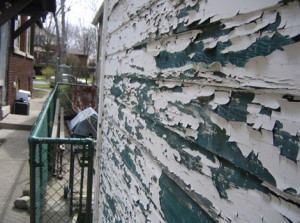Landmark Lead Paint Ruling Imposes Nuisance Liability Because Defendants “Must Have Known” Product Dangers, and Even If Their Product Not Used
By Kirsten Gough, Boston on December 5, 2017
 The California Court of Appeal in People v. ConAgra Grocery Prods. Co. has upheld in part and reversed in part a decision that put the three defendants, ConAgra Grocery Products Company, NL Industries, and the Sherwin-Williams Company, on the hook for a $1.15 billion fund for the abatement of residential lead paint in parts of California. While the amount of the abatement fund will be reduced on remand, the decision stands as the first major lead paint public nuisance award, with implications for other companies that market products considered “defective” in hindsight.
The California Court of Appeal in People v. ConAgra Grocery Prods. Co. has upheld in part and reversed in part a decision that put the three defendants, ConAgra Grocery Products Company, NL Industries, and the Sherwin-Williams Company, on the hook for a $1.15 billion fund for the abatement of residential lead paint in parts of California. While the amount of the abatement fund will be reduced on remand, the decision stands as the first major lead paint public nuisance award, with implications for other companies that market products considered “defective” in hindsight.
Plaintiff, the State of California, representing 10 jurisdictions throughout the state, filed suit in 2011 alleging that the defendants created a public nuisance through their manufacture, promotion, and sale of lead pigment and lead paint for use in California homes. The trial court found that the defendants had actual knowledge of lead paint hazards when they promoted their products for residential use for decades before the sale of lead paint was eventually banned in 1978.
Defendants appealed the trial court judgment on multiple grounds. The appellate court agreed with defendants that there was insufficient evidence demonstrating that defendants promoted lead paint for residential use after 1951, and remanded the matter to the trial court to recalculate the amount of the fund so that it covered remediation only in pre-1951 homes. The rest of the trial court’s decision, however, was affirmed, with costs awarded to plaintiff.
An important takeaway from this decision is that the appellate court was satisfied that “must have known” was an adequate replacement for actual knowledge. The decision opined that it was neither speculation nor conjecture to infer that because the defendants were leaders in the paint industry at the time, they “must have”been aware of potential hazards of lead paint. “Indeed,” the panel stated, “it would be unreasonable to infer that, notwithstanding general knowledge of the hazard of their products within the industry, defendants somehow managed to avoid learning of this hazard.” Evidence that the defendants received information from a trade group in the 1930s on lead’s dangers of and children’s susceptibility was among what was found to constitute “substantial support” for the trial court’s actual knowledge findings. Acknowledging that the evidence presented by plaintiff on this point was circumstantial, the appellate court essentially all but admitted that its hands were tied under the deferential standard of review and it had no choice but to uphold the trial court’s actual knowledge findings.
Another startling portion of this opinion was the rejection of the defendants’ argument that they should not be held liable because plaintiff could not establish that their products were in any of the homes in the 10 jurisdictions. The court ruled that this “contention misconstrues the basis for defendants’ liability. Defendants are liable for promoting lead paint for interior residential use. To the extent that this promotion caused lead paint to be used on residential interiors, the identity of the manufacturer of that lead paint is irrelevant.” The court found that while the evidence plaintiff presented consisted of “generic” promotions that didn’t refer to any specific manufacturer, it nonetheless was a substantial factor which resulted in “the use of lead paint on residential interiors,” and that the evidence supported the court’s finding of causation on that basis.
Perhaps the greatest significance of this decision is that plaintiff prevailed on a public nuisance theory. Public nuisance claims in other contexts traditionally reserved for product liability (including asbestos abatement, MTBE, and firearms) have proven largely unsuccessful in part because of the difficulty of establishing the link between the alleged injury to a public rig ht and the manufacturer’s conduct, two occurrences often temporally separated by decades. In fact, many earlier lead paint cases filed in other jurisdictions under various theories of public nuisance often failed because the plaintiffs could not establish, among other things, the requisite proximate cause.
It is of stark importance that the ConAgra court rejected defendants’ arguments concerning actual knowledge and causation in this public nuisance claim. Plaintiff prevailed despite the absence of direct evidence that defendants had actual knowledge of the hazards of interior lead paint at the time they were promoting it, and without having to show that any of defendants’ products were present in any of the homes. Will courts begin to construe other “industry leaders” as having knowledge of all risks for all purposes? Can participation in trade groups which promoted the use of generic categories of products like asbestos-containing brake pads or herbicides expose specific companies to future liability? Could the reasoning that defendants were liable regardless of whether their paint was in fact used in any of the homes seep into the product liability arena, where such tenuous evidence would be insufficient to establish duty? This decision will likely have a short term impact on pending high-profile public nuisance cases, like opioids and climate change. We may also see long term ripples across industries in California where companies may face liability years—or even decades—down the road for a future, but presently unknown, harm in the form of public nuisance claims with vague legal standards and the potential for massive awards.
Feel free to visit https://attorneysre.com/ for more information.



 Lost in the learned treatises written in the wake of the Rhode Island Supreme Court’s decision in
Lost in the learned treatises written in the wake of the Rhode Island Supreme Court’s decision in